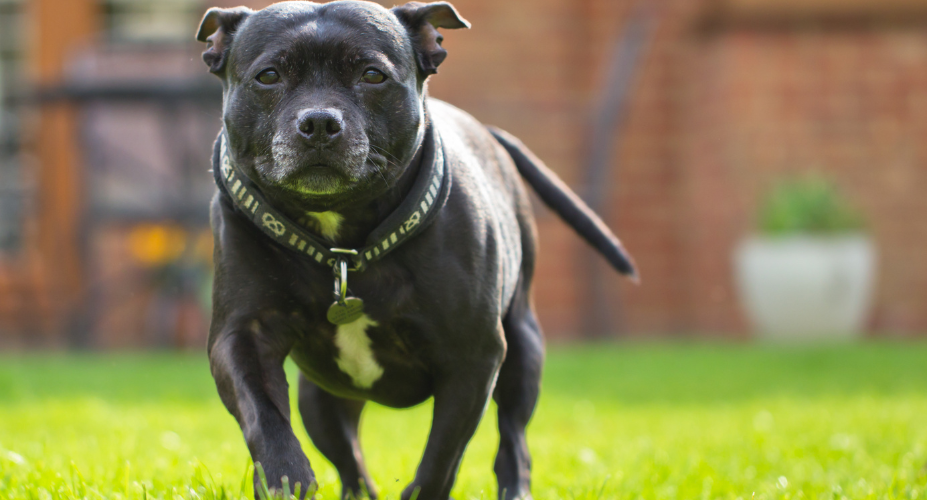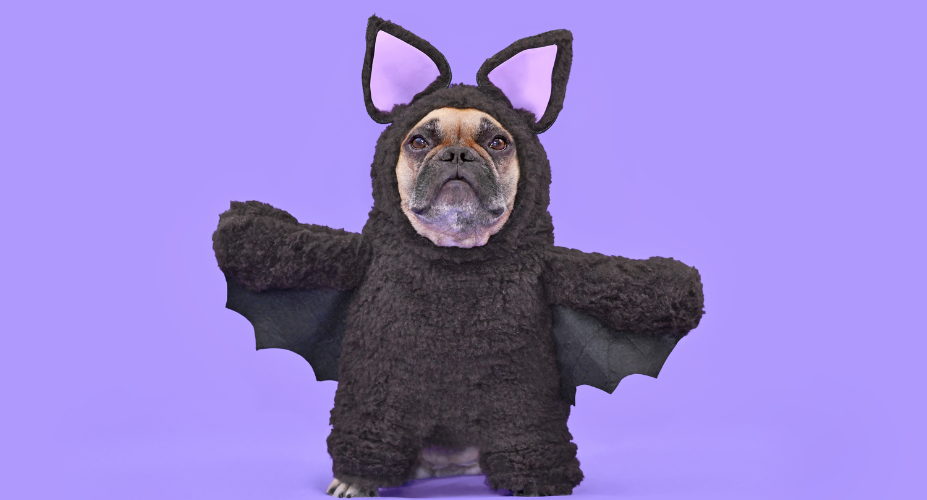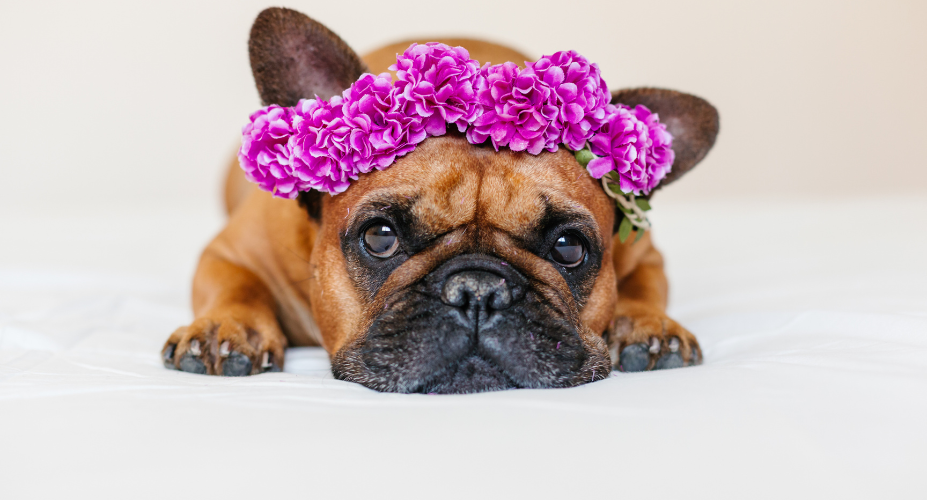French Bulldog vs. Staffordshire Bull Terrier
French Bulldog vs. Staffordshire Bull Terrier: Choosing the Right Companion for You
Get ready for a tail-wagging showdown between two beloved breeds: the charming French Bulldog and the energetic Staffordshire Bull Terrier! While both are known for their compact and muscular builds, these pups have their unique personalities that will make you fall head over heels.
First up, we have the French Bulldog, or Frenchie, as they're affectionately called. With their bat-like ears and adorable wrinkly faces, these little charmers are the perfect apartment companions. They're not the most energetic bunch, preferring to snuggle up on the couch with their favorite humans. But don't let their laid-back attitude fool you – Frenchies can be stubborn when it comes to training, so patience is key.
The Staffordshire Bull Terrier, or Staffy, is like the energizer bunny of the dog world. These medium-sized pups are always ready for action, whether it's a game of fetch or a long hike in the great outdoors. With their muscular build and courageous spirit, Staffies are often misunderstood, but beneath their tough exterior lies a heart of gold.
When it comes to family life, both breeds are known for their loyalty and affectionate nature. Frenchies are the ultimate lap dogs, content to spend hours cuddling with their loved ones. Staffies, on the other hand, are often called "nanny dogs" because of their gentle and protective nature towards children.
Before you make your decision, it's important to consider your lifestyle. If you're a city dweller with limited space and time for exercise, a French Bulldog might be the perfect fit. Just be prepared for some potential health issues related to their short snouts. If you're an active family with plenty of room to roam, a Staffordshire Bull Terrier could be your ideal companion, as long as you're willing to put in the time for training and socialization.
Whether you're team Frenchie or team Staffy, one thing's for sure – you're in for a lifetime of love, laughter, and endless cuddles with these incredible breeds.
French Bulldog vs. Staffordshire Bull Terrier Overview
|
Feature |
French Bulldog |
Staffordshire Bull Terrier |
|
Size |
Small (16 to 28 pounds) |
Medium (28 to 38 pounds) |
|
Temperament |
Headstrong yet friendly |
Courageous and tenacious |
|
Exercise Needs |
Low (30 minutes to an hour per day) |
High (vigorous daily exercise) |
|
Lifespan |
9 to 11 years |
12 to 14 years |
|
Health Issues |
Prone to respiratory problems, joint issues, and skin problems |
Generally robust, but regular veterinary check-ups are important |
|
Training |
Can be stubborn, requires patient and consistent training |
Intelligent and eager to please, respond well to consistent, firm, but fair training |
|
Socialization |
Good with children and other pets, needs early socialization |
Known for their patience and love for children, need early socialization |
|
Living Situation |
Adaptable to various living situations, including apartments |
Thrives in a home where they can get plenty of exercise, suitable for larger homes with outdoor space |
|
Breed-Specific Challenges |
Stubbornness can make training a challenge |
Misconceptions about their temperament due to their historical role as a fighting dog
|
History and Origin

The French Bulldog, affectionately known as the Frenchie, has a rich and fascinating history that spans three countries: England, France, and America. The breed's origins can be traced back to ancient Greece, where it shares ancestry with mighty breeds like the Great Pyrenees and the Molossus, a large war dog.
However, the breed as we know it today began to take shape in England in the 1800s.During the Industrial Revolution in England, many industries faced job shrinkage. Among those affected were lace workers, who decided to seek opportunities elsewhere, taking their miniature bulldogs with them.
These small bulldogs, which were popular among the workers, found a new home in France, particularly in the North, where they quickly gained popularity.
The French began importing these bulldogs, which were then called "Bouledogues Français". These charming little dogs became a symbol of the Parisian lifestyle, gaining popularity among various social classes, from ordinary Parisians to society folks. The breed underwent further development in France, where breeders favored the smaller size and erect ears, characteristics that were less appreciated in England.
By the early 20th century, the breed had crossed borders again, this time to America, where the social elite embraced it and quickly gained popularity. The American Kennel Club recognized the breed, and American fanciers established the world's first French Bulldog club.
Today, the French Bulldog is a beloved companion worldwide, known for its distinctive appearance and charming personality. Its journey from the lace workers of England to the high society of America is a testament to the breed's adaptability and enduring appeal.
Physical Characteristics
While both robust and muscular, the French bulldog and the Staffordshire Bull Terrier have distinct physical characteristics that set them apart. The French Bulldog, often recognized by its bat-like ears and squashed face, is a small breed. It typically weighs between 16 and 28 pounds and stands about 11 to 12 inches tall at the shoulder.
Its compact body is well-muscled, with a heavy bone structure and a smooth coat. The coat comes in a variety of colors, including brindle, fawn, white, and combinations of these. Despite its short coat, the French Bulldog requires regular grooming to keep its skin healthy. This includes weekly brushing to remove loose hair and regular checks for skin folds that may need cleaning.
The Staffordshire Bull Terrier is a medium-sized breed. It stands taller and weighs more than the French Bulldog, with males typically weighing between 28 to 38 pounds and standing about 14 to 16 inches tall. The Staffy is known for its broad head, muscular body, and short, dense coat.
The Staffordshire Bull Terrier's coat can be in various colors, including black, blue, fawn, red, white, or any of these colors with white. Its coat is low-maintenance, requiring only occasional brushing to keep it looking its best.
Temperament and Personality

While both the French Bulldog and the Staffordshire Bull Terrier are beloved for their unique personalities, they exhibit different temperaments that potential owners should consider. The French Bulldog, commonly referred to as a Frenchie, is known for its headstrong yet friendly nature. Despite their small size, these dogs carry a big-dog attitude, often displaying a stubborn streak that can be both endearing and challenging.
However, this does not overshadow their friendly disposition. French Bulldogs are recognized for forming deep bonds with their families and thriving on companionship and attention.
They are generally good with children and can get along well with other pets, especially when properly introduced. Their primary role is that of a companion, and they excel in this, offering loyalty and affection to their human families. On the other hand, the Staffordshire Bull Terrier, also known as the Staffy, is characterized by its courage and tenacity. This breed is known for its bravery and determination, traits that were valued in its historical role as a fighting dog.
It is important to note that the Staffy is also known for its affectionate nature. Despite their tough exterior, Staffordshire Bull Terriers are often described as 'nanny dogs' due to their patience and love for children. They are intelligent and eager to please, which can make them a joy to train.
Health and Lifespan
When considering the health and lifespan of the French Bulldog and the Staffordshire Bull Terrier, it's important to note that each breed has its own set of common health issues and life expectancy. Regular veterinary check-ups and preventive care play a crucial role in ensuring the health and longevity of these breeds. The French Bulldog typically has a lifespan of 9 to 11 years.
This breed is prone to certain health problems, primarily due to its unique physical characteristics. French Bulldogs often suffer from respiratory issues because of their short muzzles. They can also be prone to other joint, skin, or health problems. Regular veterinary visits can help identify these issues early, and preventive care, such as maintaining a healthy weight and avoiding excessive heat, can help manage these conditions.
The Staffordshire Bull Terrier generally lives longer, with a typical lifespan of 12 to 14 years. While this breed is generally robust, it's not immune to health issues. Regular veterinary check-ups and preventive care are equally important for the Staffordshire Bull Terrier to ensure a long and healthy life.
Exercise and Activity Levels

The French Bulldog, with its compact size and amiable personality, requires moderate daily exercise to maintain its health. Typically, around 30 minutes to an hour per day is sufficient.
French bulldogs' exercise can be split into shorter, more manageable sessions to suit their respiratory systems and prevent overheating. Regular exercise helps prevent obesity, keeps their joints healthy, and aids in managing common breed-related issues such as brachycephalic syndrome. Suitable activities for French Bulldogs include short walks, play sessions, and positive reinforcement-based training sessions to keep their minds active.
The Staffordshire Bull Terrier is a breed that is well known for its high energy and athleticism. Due to their active nature, they require a substantial amount of exercise, which should be divided between physical activities and mental challenges to cater to their high energy levels. Exercise plays a crucial role in maintaining a healthy weight, supporting joint health, and promoting overall cardiovascular fitness. Suitable activities for Staffordshire Bull Terriers include longer walks, play sessions with other dogs, and training exercises that provide mental stimulation.
Training and Socialization
Training and socialization are crucial aspects of raising a well-adjusted and obedient dog, and this is no different for French Bulldogs and Staffordshire Bull Terriers. Both breeds benefit greatly from early training and socialization, which help shape their behavior and interactions with their environment.
French Bulldogs, known for their stubborn yet affectionate nature, require consistent and patient training. It's important to understand the breed's unique traits and tailor the training accordingly. Basic obedience commands such as "sit," "stay," "down," and "come" are essential for the safety and well-being of your French Bulldog. These commands should be taught utilizing positive reinforcement techniques, keeping training sessions short and enjoyable, and rewarding your Frenchie for their efforts.
Socialization is equally important for French Bulldogs. Despite their friendly nature, they need to be exposed to various environments, people, and animals from an early age to ensure they are well-adjusted around other dogs and people.This process should be tailored to the French Bulldog's unique temperament and needs, avoiding overwhelming situations and negative reinforcements.
Staffordshire Bull Terriers, known for their courage and tenacity, also benefit from early training and socialization. This breed is intelligent and eager to please, which can make them a joy to train. Their energetic and determined nature means they require consistent, firm, but fair training methods. Socialization is equally important for Staffordshire Bull Terriers to ensure they are comfortable and well-behaved around other dogs and people.
Suitability for Families and Living Situations
While both the French Bulldog and the Staffordshire Bull Terrier are known for their affectionate nature, they interact differently with children, other pets, and living situations.
The French Bulldog, bred to be a companion pet, develops strong bonds with its humans and is generally good with children. They are known to be laid-back and loving, often seeking a snooze on the sofa with their owners. Their calm demeanor means they may not be the most energetic playmate for children. French Bulldogs are versatile dogs that can thrive in different living environments, whether it's a spacious house with acres of land or a cozy apartment with no backyard. Their moderate exercise requirements and compact size make them ideal for apartment living.
The Staffordshire Bull Terrier is a great choice for families with children. Despite their powerful appearance, Staffies are known for their patience and gentleness with kids. As they can be quite energetic, it's important to supervise them around young children or toddlers, as they may accidentally knock them down. Staffordshire Bull Terriers can adapt well to any type of home, as long as they have access to a securely fenced yard and are kept indoors. As they require regular exercise and have high energy levels, they are better suited for larger homes with outdoor space.
Breed-Specific Challenges

Staffordshire Bull Terriers often face misconceptions about their temperament. Despite their powerful stance and an unfair reputation for violence, Staffies are among some of the sweetest dog breeds.
The Kennel Club even highlights their affectionate, caring, and playful nature. It's important to understand that a dog's behavior is often a reflection of its upbringing and training. With proper socialization and training, a Staffordshire Bull Terrier can be a loving as well as loyal family pet.
French Bulldogs, on the other hand, are often associated with a stubborn streak. This can make training a challenge, but it's important to remember that every dog is an individual and that patience and consistency are key.
FAQs
Which breed requires more exercise, the French Bulldog or the Staffordshire Bull Terrier?
The Staffordshire Bull Terrier requires more exercise than the French Bulldog due to its higher energy levels.
Are French Bulldogs or Staffordshire Bull Terriers easier to train?
Both breeds can be trained effectively, but their distinct personalities may require different approaches. French Bulldogs are notorious for their stubbornness, which means their training may require a lot of patience and consistency. On the other hand, Staffordshire Bull Terriers are intelligent and eager to please, which makes them a pleasure to train.
Which breed is more suitable for apartment living?
French Bulldogs are generally more adaptable to apartment living due to their smaller size and lower exercise needs. Both breeds can adjust to various living situations as long as their exercise and mental stimulation requirements are met.
Conclusion
When it comes to choosing between a French Bulldog and a Staffordshire Bull Terrier, it's all about finding the perfect match for your lifestyle and personality. The French Bulldog, with its compact size and affectionate nature, is the ultimate cuddle buddy for those who prefer a low-key companion. These little charmers can thrive in various living situations, from cozy apartments to spacious homes, and their unwavering loyalty will melt your heart.
If you're looking for a playful and energetic sidekick, the Staffordshire Bull Terrier might be your ideal match. These medium to large-sized pups are known for their infectious joy and love for their families, especially children. However, be prepared to keep up with their high energy levels through plenty of exercise and playtime.
Despite some misconceptions, Staffordshire Bull Terriers are among the sweetest breeds when properly socialized and trained. Their affectionate nature and goofy antics will keep you smiling all day long.
When deciding between these two breeds, it's crucial to consider your lifestyle, available time for exercise, training, and companionship, and your living space. Each breed has its unique charms and challenges, so aligning these factors with your dog's needs is key to a fulfilling and loving relationship. Remember, adopting a dog is a long-term commitment, and ensuring compatibility will lead to a lifetime of happiness with your new furry friend.









Comments